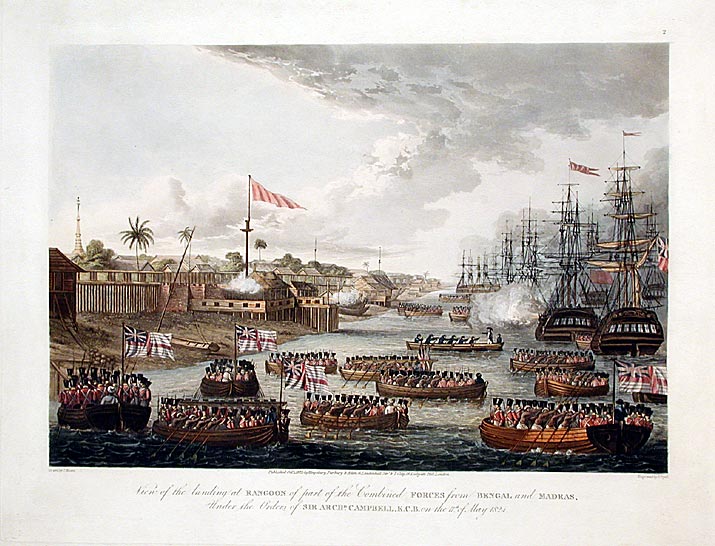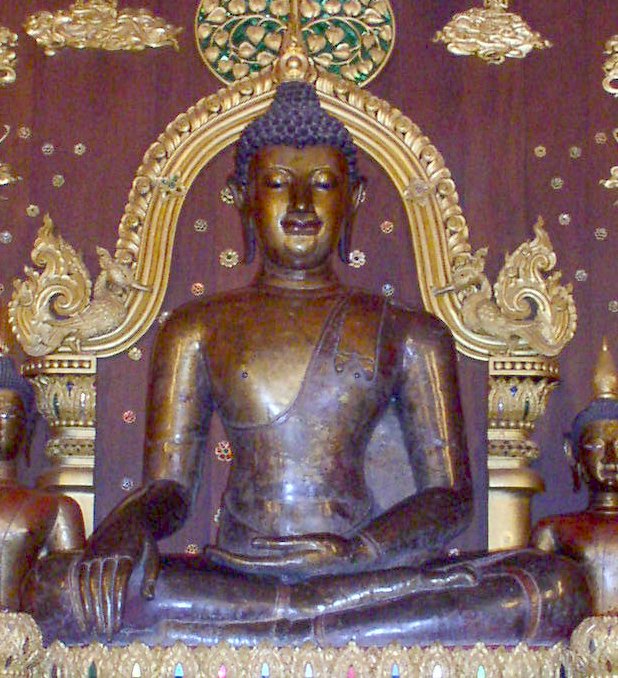|
Wat Mahannapharam
Wat Mahannapharam Worawihan or Wat Mahan, commonly called Wat Mahanop ( th, วัดมหรรณพ, link=no), is a Wat, Buddhist temple in Bangkok, Thailand. The first state school for general public in Thailand was established at the temple in 1884. History Wat Mahannapharam Worawihan was constructed in the reign of King Rama III (1824–1851) by Prince Annop, a son of Rama III. The construction began in 1850 with the king providing 80,000 baht. However it was only completed in the reign of King Rama IV (1851–1868) when the new king provided another 80,000 baht. The name of the temple means "the great abode of water", referring to the Sea of Saṃsāra (Buddhism), Samsara, the endless cycle of birth, death and rebirth. The first public school in Thailand was established at Wat Mahannapharam by the abbot of the temple after an instruction was issued by Rama V encouraging temples to set up new schools for common people in 1884. It was the beginning of mass education in T ... [...More Info...] [...Related Items...] OR: [Wikipedia] [Google] [Baidu] |
Bangkok
Bangkok, officially known in Thai language, Thai as Krung Thep Maha Nakhon and colloquially as Krung Thep, is the capital and most populous city of Thailand. The city occupies in the Chao Phraya River delta in central Thailand and has an estimated population of 10.539 million as of 2020, 15.3 percent of the country's population. Over 14 million people (22.2 percent) lived within the surrounding Bangkok Metropolitan Region at the 2010 census, making Bangkok an extreme primate city, dwarfing Thailand's other urban centres in both size and importance to the national economy. Bangkok traces its roots to a small trading post during the Ayutthaya Kingdom in the 15th century, which eventually grew and became the site of two capital cities, Thonburi Kingdom, Thonburi in 1768 and Rattanakosin Kingdom (1782–1932), Rattanakosin in 1782. Bangkok was at the heart of the modernization of Siam, later renamed Thailand, during the late-19th century, as the country faced pressures from the ... [...More Info...] [...Related Items...] OR: [Wikipedia] [Google] [Baidu] |
State School
State schools (in England, Wales, Australia and New Zealand) or public schools (Scottish English and North American English) are generally primary or secondary educational institution, schools that educate all students without charge. They are funded in whole or in part by taxation. State funded schools exist in virtually every country of the world, though there are significant variations in their structure and educational programmes. State education generally encompasses primary and secondary education (4 years old to 18 years old). By country Africa South Africa In South Africa, a state school or government school refers to a school that is state-controlled. These are officially called public schools according to the South African Schools Act of 1996, but it is a term that is not used colloquially. The Act recognised two categories of schools: public and independent. Independent schools include all private schools and schools that are privately governed. Indepen ... [...More Info...] [...Related Items...] OR: [Wikipedia] [Google] [Baidu] |
King Rama III
Nangklao ( th, พระบาทสมเด็จพระนั่งเกล้าเจ้าอยู่หัว, ; 31 March 1788 – 2 April 1851), birth name Thap ( th, ทับ), also styled Rama III, was the third king of Siam under the House of Chakri, ruling from 21 July 1824 to 2 April 1851. Nangklao was the eldest surviving son of his predecessor, king Rama II. His mother Sri Sulalai was one of the king's secondary wives. Nangklao was likely designated as heir by his father, his accession was uncontested and smoothly confirmed by the grand council. Foreign observers, however, falsely perceived him as having usurped the prior claim of his half-brother Prince Mongkut, who was younger, but born to queen Sri Suriyendra and thus " legitimate" according to Western customs. Under the old concept of Thai monarchy, however, a proper king must emulate Maha Sammata in that he must be "elected by the people." Ironically, Prince Mongkut may have later contributed to thi ... [...More Info...] [...Related Items...] OR: [Wikipedia] [Google] [Baidu] |
King Rama IV
Mongkut ( th, มงกุฏ; 18 October 18041 October 1868) was the fourth monarch of Siam (Thailand) under the House of Chakri, titled Rama IV. He ruled from 1851 to 1868. His full title in Thai was ''Phra Bat Somdet Phra Menthora Ramathibodi Sri Sinthara Mahamakut Phra Mongkut Phra Siam Deva Mahamakut Wittaya Maharaj'' (พระบาทสมเด็จพระปรเมนทรรามาธิบดีศรีสินทรมหามงกุฎ พระจอมเกล้าเจ้าอยู่หัว พระสยามเทวมหามกุฏวิทยมหาราช). Outside Thailand, Mongkut is best known as the king in the 1951 musical and 1956 film ''The King and I'', based on the 1946 film '' Anna and the King of Siam''in turn based on a 1944 novel by an American author about Anna Leonowens' years at his court, from 1862 to 1867, drawn from Leonowens’ memoir. Siam first felt the pressure of Western expansionism during Mongku ... [...More Info...] [...Related Items...] OR: [Wikipedia] [Google] [Baidu] |
Saṃsāra (Buddhism)
Saṃsāra ( sa, संसार, pi, saṃsāra; also ''samsara'') in Buddhism and Hinduism is the beginningless cycle of repeated birth, mundane existence and dying again. Samsara is considered to be '' dukkha'', suffering, and in general unsatisfactory and painful, perpetuated by desire and '' avidya'' (ignorance), and the resulting karma. Rebirths occur in six realms of existence, namely three good realms (heavenly, demi-god, human) and three evil realms (animal, ghosts, hellish). Samsara ends if a person attains nirvana, the "blowing out" of the desires and the gaining of true insight into impermanence and non-self reality. Characteristics In Buddhism, ''saṃsāra'' is the "suffering-laden, continuous cycle of life, death, and rebirth, without beginning or end". In several suttas of the Samyutta Nikaya's chapter XV in particular it's said "From an inconstruable beginning comes transmigration. A beginning point is not evident, though beings hindered by ignorance and fett ... [...More Info...] [...Related Items...] OR: [Wikipedia] [Google] [Baidu] |
Rama V
Chulalongkorn ( th, จุฬาลงกรณ์, 20 September 1853 – 23 October 1910) was the fifth monarch of Siam under the House of Chakri, titled Rama V. He was known to the Siamese of his time as ''Phra Phuttha Chao Luang'' (พระพุทธเจ้าหลวง, the Royal Buddha). Chulalongkorn's reign was characterised by the modernisation of Siam, governmental and social reforms, and territorial concessions to the British and French. As Siam was surrounded by European colonies, Chulalongkorn, through his policies and acts, ensured the independence of Siam. All his reforms were dedicated to ensuring Siam's independence given the increasing encroachment of Western powers, so that Chulalongkorn earned the epithet ''Phra Piya Maharat'' (พระปิยมหาราช, the Great Beloved King). Early life King Chulalongkorn was born on 20 September 1853 to King Mongkut and Queen Debsirindra and given the name Chulalongkorn. In 1861, he was designated '' ... [...More Info...] [...Related Items...] OR: [Wikipedia] [Google] [Baidu] |
Royal Thai Government Gazette
The ''Royal Thai Government Gazette'' (, ), frequently abbreviated to ''Government Gazette'' (GG) or ''Royal Gazette'' (RG), is the public journal and newspaper of record of Thailand. Laws passed by the government generally come into force after publication in the GG. The Royal Thai Government Gazette was the first Thai-language newspaper to appear in the kingdom and is also one of the earliest newspapers in Asia that is still in publication. The Cabinet Secretariat, a department in the Office of the Prime Minister, is charged with printing the GG. History The GG was first issued on 15 March 1858 by King Rama IV to inform government officials and the general public of news about the country. King Rama III had previously had 9,000 copies printed of a ''Decree Forbidding Opium Smoking and Sale'' in 1839. Previously, royal scribes had been compiling decrees by hand. Because of the many difficulties that this entailed, King Rama IV accordingly had a printing press set up inside the ... [...More Info...] [...Related Items...] OR: [Wikipedia] [Google] [Baidu] |
Ordination Hall
The ordination hall is a Buddhist building specifically consecrated and designated for the performance of the Buddhist ordination ritual ('' upasampada'') and other ritual ceremonies, such as the recitation of the Patimokkha. The ordination hall is located within a boundary () that defines "the space within which all members of a single local community have to assemble as a complete Sangha () at a place appointed for ecclesiastical acts ()." The constitution of the ''sīmā'' is regulated and defined by the Vinaya and its commentaries and sub-commentaries. Burmese ordination halls In Burmese, ordination halls are called ''thein'' (), derived from the Pali term , which means "boundary." The ''thein'' is a common feature of Burmese monasteries (''kyaung''), although the ''thein '' may be not necessarily be located on the monastery compound itself. Shan ordination halls, called ''sim'' (သိမ်ႇ)'','' are exclusively used for events limited to the monkhood. The central imp ... [...More Info...] [...Related Items...] OR: [Wikipedia] [Google] [Baidu] |
Thai Buddhist Sculpture
A Buddha image in Thailand typically refers to three-dimensional stone, wood, clay, or metal cast images of the Buddha. While there are such figures in all regions where Buddhism is commonly practiced, the appearance, composition and position of the images vary greatly from country to country in Buddhist art. Dvaravati period During the Dvaravati period (seventh through eleventh centuries), there were two factions of Buddhism practiced in the region that now encompasses present day Thailand, namely Mahayana and Theravada. The types of images constructed during this era reflects the distinction. Much of the basis for the Buddhist artwork of the Dvaravati period was influence from Buddhist art in India, including the Amaravati school and Gupta styles, although there was also local and Khmer influence. Such images include the following classical archetypes: *Buddha in the tribhanga (leaning) position with somewhat Indian facial features and no aureole. The right hand is typically fre ... [...More Info...] [...Related Items...] OR: [Wikipedia] [Google] [Baidu] |
.jpg)






